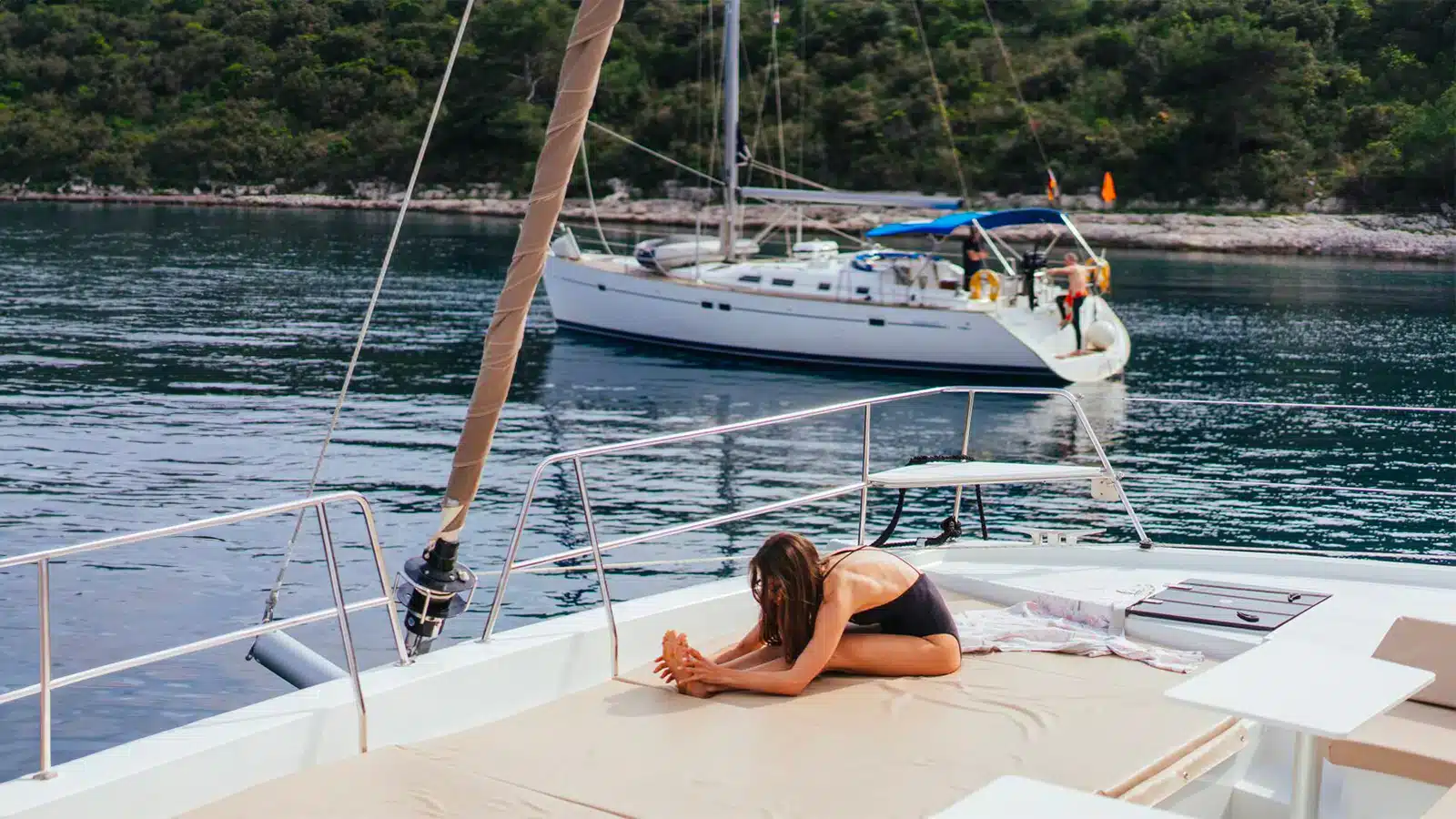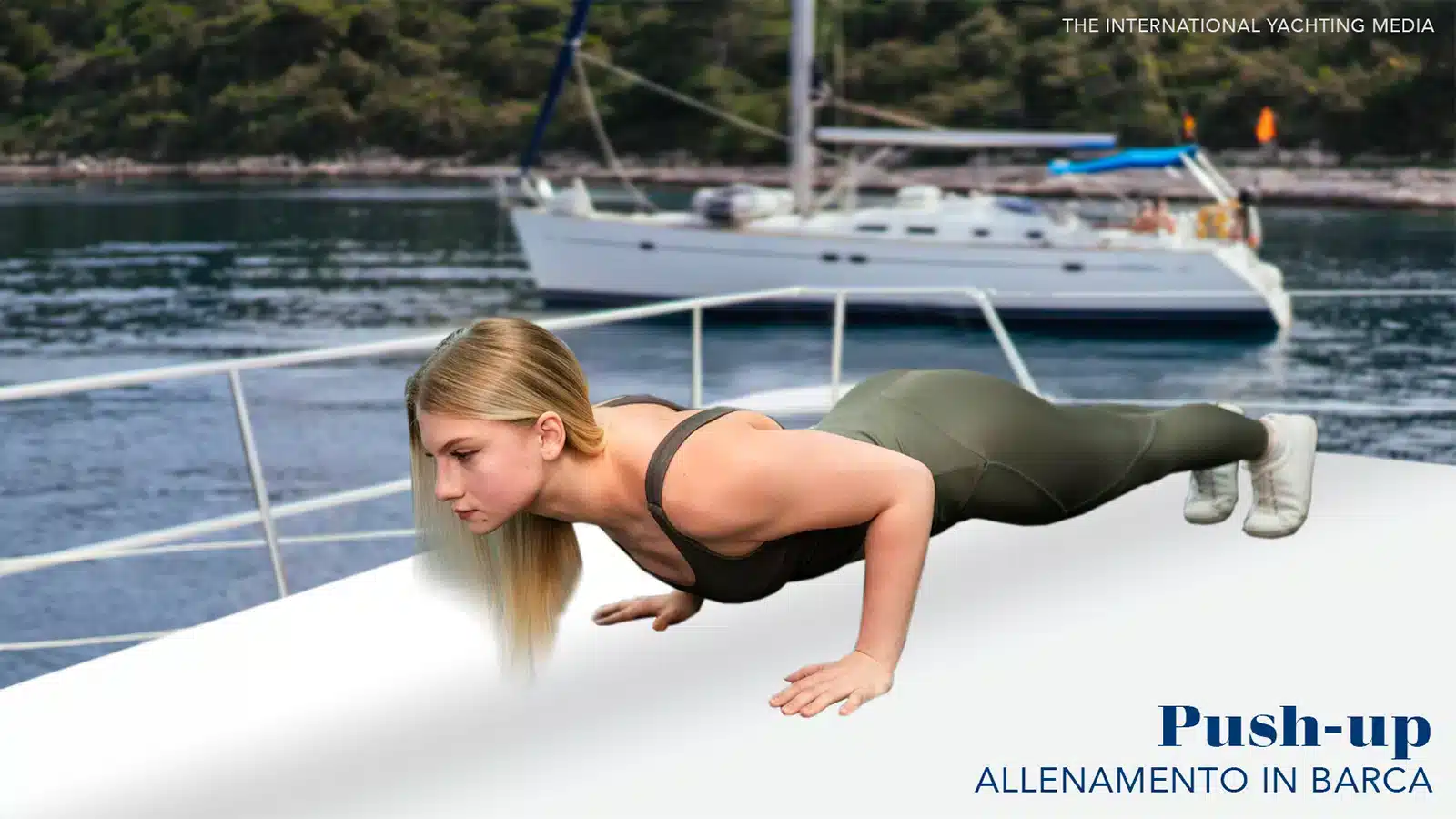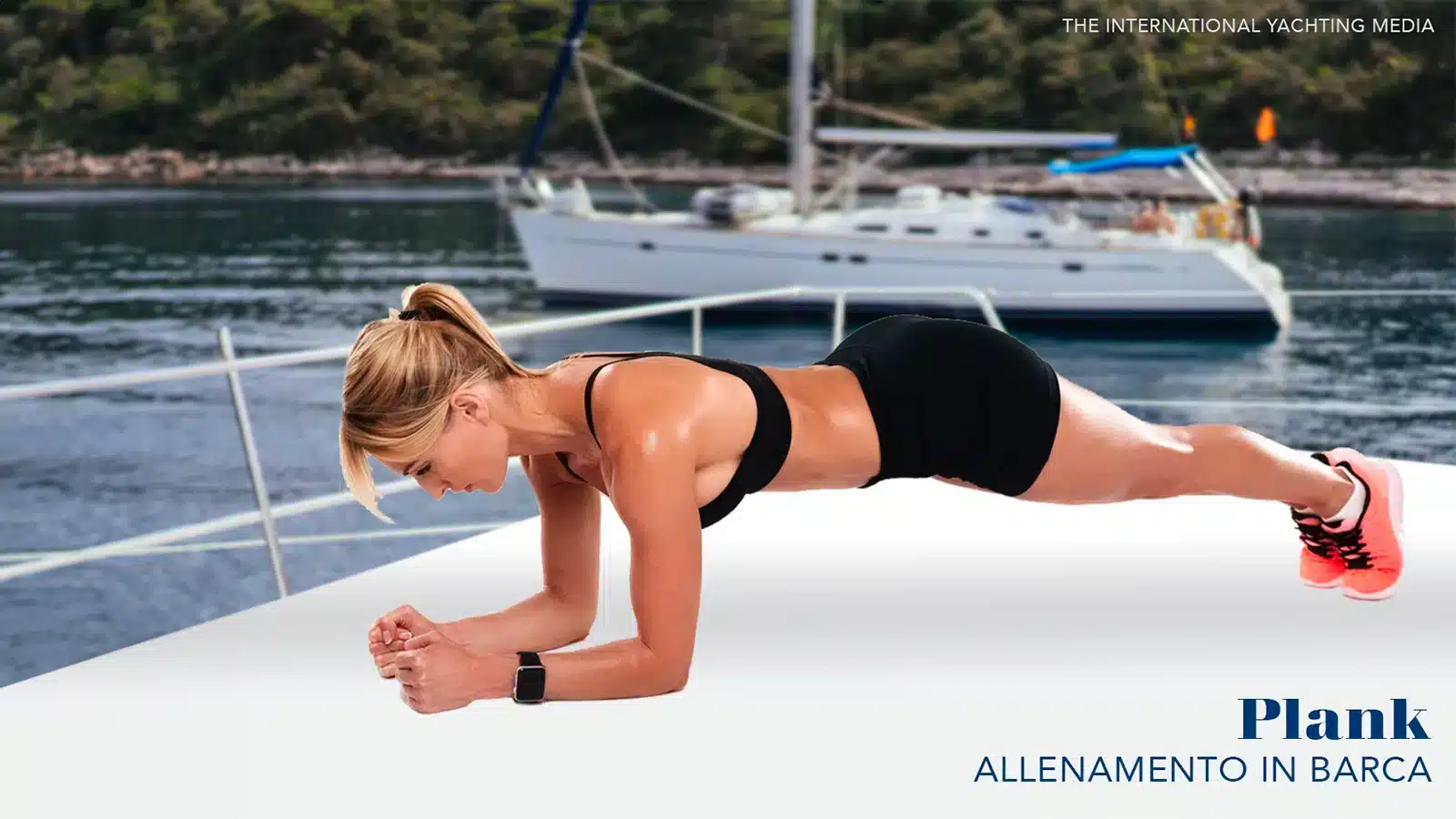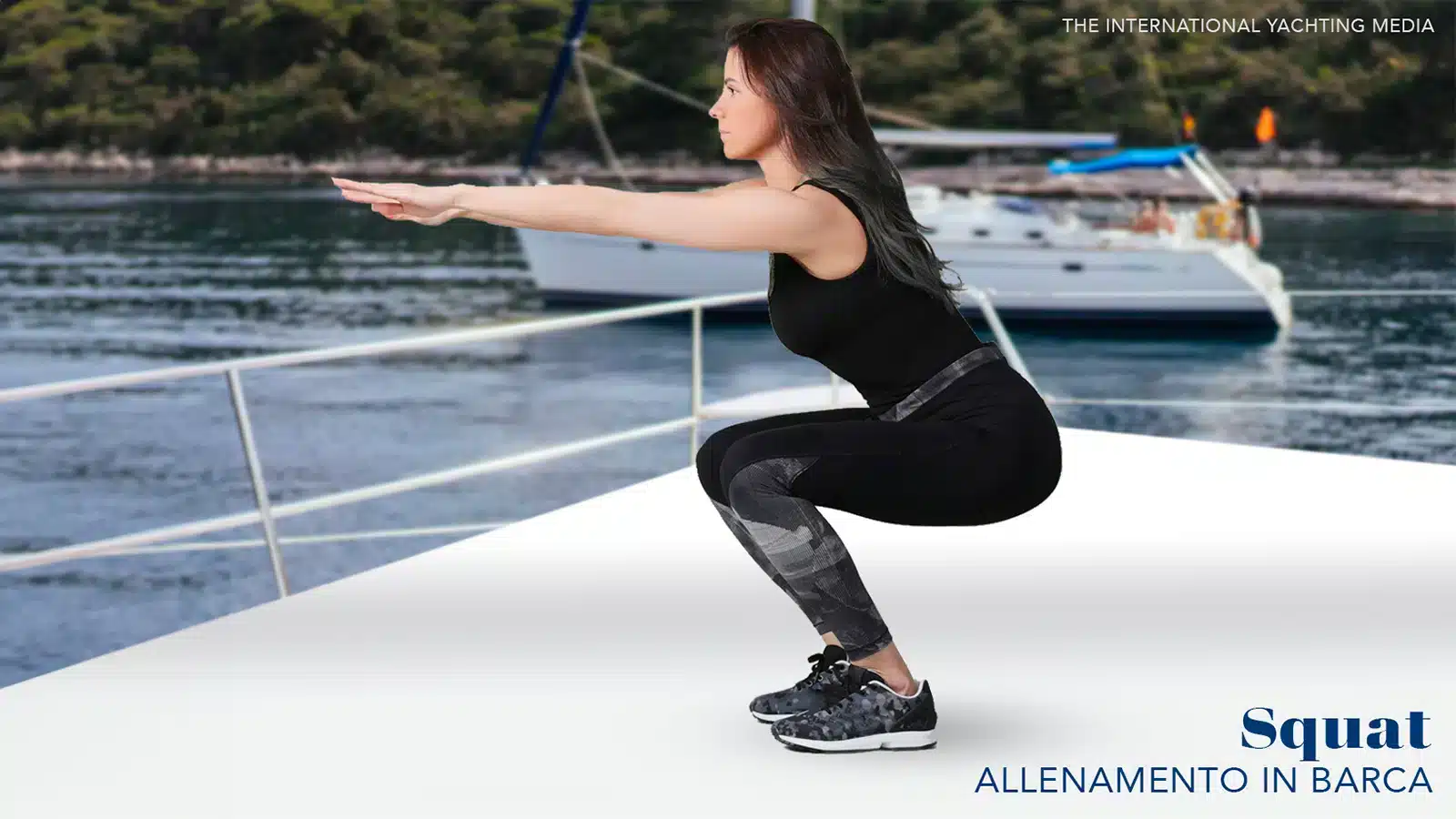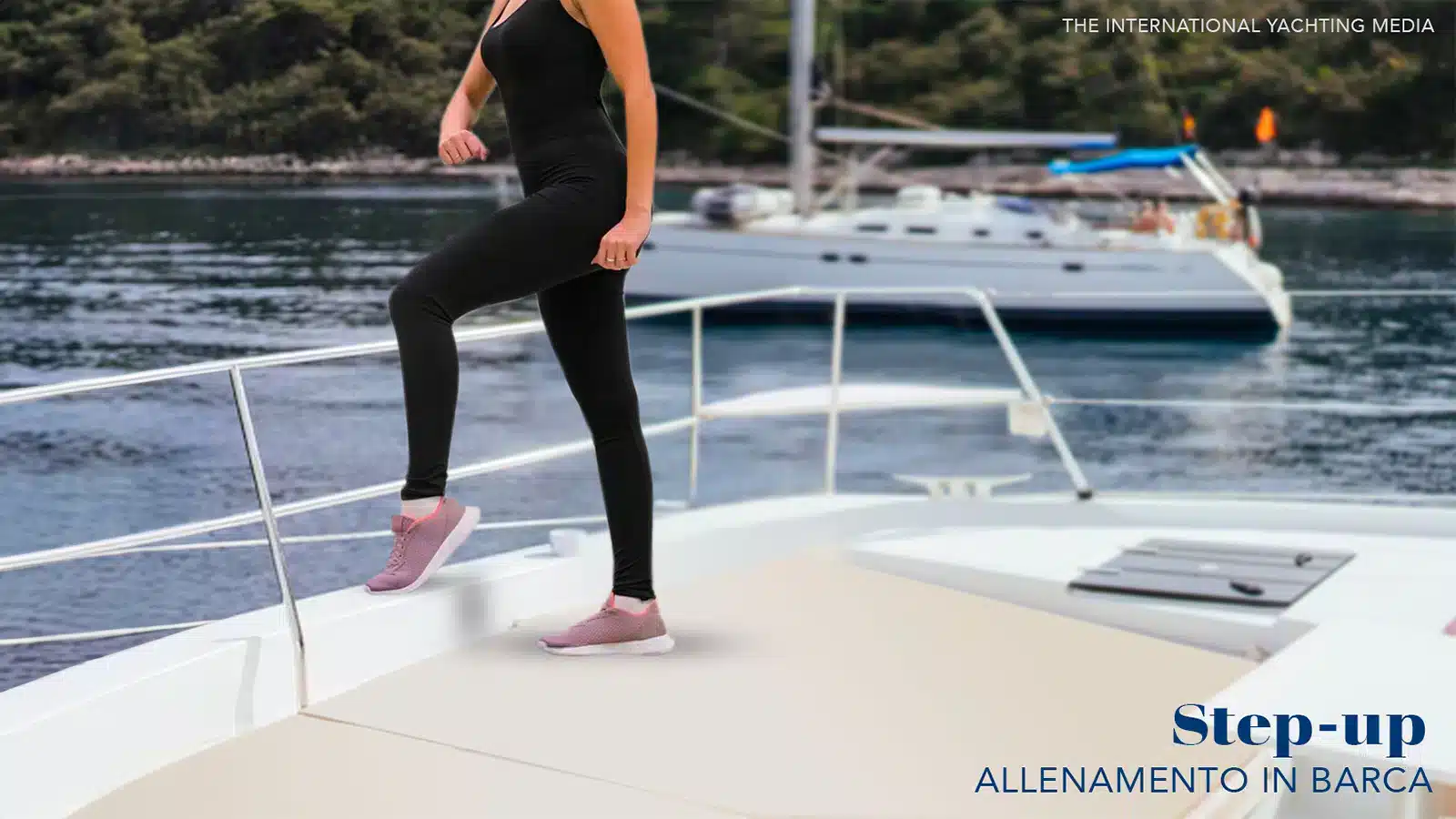Exercising on a boat: easy and feasible, even without setting foot on land.
In a perfect blend of adventure and fitness, boat workouts are a unique opportunity for those who wish to combine their love for sailing with maintaining good health.
Living in close contact with nature, enjoying improved air quality, and embracing a slower pace, typical of a vacation, make the boat an ideal place to take care of oneself and restore biological balance. In this regenerative setting, an active, sporty lifestyle fits perfectly, helping the body shed excess weight and function like a well-oiled machine. Moreover, considering that boats don’t offer ample space for sports activities, paying special attention to training becomes even more crucial.
This guide provides creative insights that you can follow during your time on the boat to stay in shape and lose weight sustainably.
Health and Physical Well-being: differences between women and men
The substantial differences in body composition (quantity and distribution of muscle mass and fat mass), hormonal production, and physical structure between men and women are well-known and thoroughly explained by scientific research. Although these differences do not imply that men and women must follow entirely different training programs, they suggest that there might be some specific considerations to optimize training results based on gender.
For instance, men tend to have greater muscle development (facilitated by testosterone), while women, who produce more estrogen, experience its effects on body fat distribution and metabolism.
Therefore, the proposed exercises should be adapted to individual needs and always performed with respect to one’s own body.
Exercising on a boat: using equipment or bodyweight
A crucial consideration when exercising on a boat involves the use of equipment. Boats are often organized to optimize space, meaning that interiors have limited space, and storage is essential. The use of weights and barbells may prove inefficient due to their bulkiness and weight.
A practical alternative is to adapt natural items found on the boat to create exercises. For example, using the small anchor of the dinghy as a kettlebell or substituting halyards or ropes for a TRX. There is also a wide variety of bodyweight exercises or exercises using small tools like resistance bands or light dumbbells. Let’s explore some of them now.
Short strength training
The timeless classics of bodyweight exercises are always effective, considering that boats, especially sailing ones, provide an unstable support surface. In this regard, performing push-ups, planks, and squats can be more challenging than usual, as it engages stabilizing muscles that are normally at rest.
Given that on a boat, arms are frequently used (for handling sheets or throwing mooring lines), it may make sense and be beneficial to focus more on the legs, back, and abdomen.
Exercising on a boat: 5 exercises to stay fit
If all you have on hand are your sneakers and a towel, the listed exercises below could be suitable for a brief workout session before refreshing yourself with a dip in the sea. Considering that boats are highly unstable places, any position can be a good opportunity to train various muscle groups.
Push-ups
Slaloming through portholes, cleats, and sheets, find a flat surface where you can lie down facing down: that will be the spot for your push-ups. The number of repetitions and the execution method depend, of course, on your fitness level and can be adjusted during the workout.
Standard recommendation: 15 repetitions x 3 sets
Variation: with knees on the ground.
Plank
Maintaining the same position as push-ups, place your elbows on a towel and hold the position, creating a plank.
Standard recommendation: 30″/1′
Variation: supporting yourself on your hands
Dynamic variation: touch the opposite shoulder with your hand and then switch hands (10 times)
Squats, or leg bends:
Find a secure place where you can safely lower yourself in case the boat’s movement causes you to lose balance.
Standard recommendation: 15 repetitions x 3 sets
Variation: sitting and standing up from a bench
Lunges and step-ups:
As mentioned earlier, boats host unstable surfaces, which can work to our advantage when it comes to training, meaning putting in the effort. Trying to perform lunges forward or backward, you will notice how much harder it is to return to an upright position due to the deck’s oscillations. You can assist yourself by keeping your arms open or by leaning on something stable.
Similarly, going up and down a step (step-up) can be an exercise as simple as it is challenging.
Standard recommendation: 10 repetitions per leg x 3 sets
Variation: holding small dumbbells or water bottles during lunges.
Total Body Activities
Let’s not forget about total body physical activity. Being on a boat, swimming won’t be a problem; aerobic activities bring invaluable benefits. Even short sessions of just a few minutes, if repeated several times throughout the day, add up, contributing to an important “health score.”
The secret to sustaining a productive workout on a Boat
Most people go boating to unwind and enjoy a vacation, so stressing about adhering to a strict diet and exhausting workout routine isn’t sustainable and is likely to lead to failure in just a few days. There’s no need to work out for two consecutive hours, enduring intense and hot sweat sessions.
It is much more effective and sustainable to maintain an active lifestyle. This could involve swimming for a few minutes in the morning, before lunch, and in the afternoon. Interspersing short squat sessions between sails or engaging in exploration and snorkeling during stops are also excellent ways to stay active.
While on vacation, we disconnect from our daily lives and slow down from the hustle of work; our bodies also need to change rhythms, take a sigh of relief, and find their balance. If you manage to incorporate small workouts during your sails, you’ve already accomplished half the task, and in just a few days, you’ll discover that your body is reaping the initial benefits!

